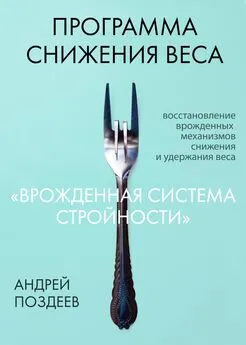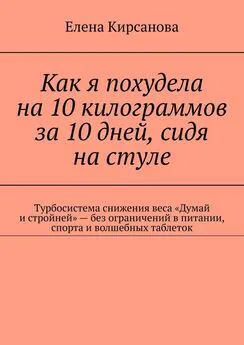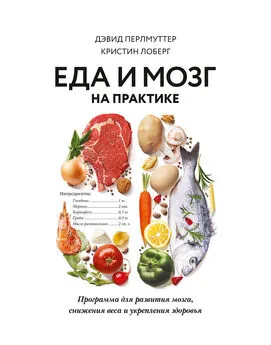Джонатан Авив - Как вылечить изжогу, кашель, воспаление, аллергию, ГЭРБ. Программа снижения кислотности за 28 дней
- Название:Как вылечить изжогу, кашель, воспаление, аллергию, ГЭРБ. Программа снижения кислотности за 28 дней
- Автор:
- Жанр:
- Издательство:Эксмо
- Год:2021
- Город:Москва
- ISBN:978-5-04-109659-5
- Рейтинг:
- Избранное:Добавить в избранное
-
Отзывы:
-
Ваша оценка:
Джонатан Авив - Как вылечить изжогу, кашель, воспаление, аллергию, ГЭРБ. Программа снижения кислотности за 28 дней краткое содержание
Джонатан Авив, профессор отоларингологии и всемирно признанный врач, разработал авторскую методику лечения опасных симптомов, основанную на изменении рациона и внедрении в жизнь ежедневной минимальной физической активности. Все рецепты просты в приготовлении, а тренировки и рекомендации по дыханию доступны человеку с любым уровнем физической подготовки.
Система 28-дневного снижения кислотности в организме и избавления от симптомов ГЭРБ включает в себя 2 фазы: 1 — исключение промышленных и натуральных продуктов с высокой кислотностью; 2 — возвращение в рацион части запрещенных продуктов. Идея — дать организму перерыв, чтобы фермент пепсин, ответственный за поедание пищевода, полностью вывелся из этого органа.
Как вылечить изжогу, кашель, воспаление, аллергию, ГЭРБ. Программа снижения кислотности за 28 дней - читать онлайн бесплатно ознакомительный отрывок
Интервал:
Закладка:
Aviv, J.E., and L.F. Johnson. Flexible Endoscopic Evaluation of Swallowing with Sensory Testing (FEESST) to Diagnose and Manage Patients with Pharyngeal Dysphagia. Practical Gastroenterology 24 (2000): 52–59.
Aviv, J.E., M. Parides et al. Endoscopic Evaluation of Swallowing as an Alternative to 24-Hour pH Monitoring to Diagnose Extra-Esophageal Reflux. Annals of Otology, Rhinology and Laryngology 109, suppl. 184 (2000): 25–27.
Christopher, K.L., R.P. Wood II et al. Vocal-Cord Dysfunction Presenting as Asthma. New England Journal of Medicine 308, no. 26 (1983): 1566–1570.
Cohen, L., M. DeLegge et al. AGA Institute Review of Endoscopic Sedation. Gastroenterology 133, no. 2 (2007): 675–701.
Cohen, L.B., and A.A. Benson. Issues in Endoscopic Sedation. Gastroenterology and Hepatology 5, no. 8 (2009): 565–570.
Enestvedt, B.K., G.M. Eisen et al. Is the American Society of Anesthesiologists Classification Useful in Risk Stratification for Endoscopic Procedures? Gastrointestinal Endoscopy 77, no. 3 (2013): 464–471.
Harding, S.M., and J.E. Richter. The Role of Gastroesophageal Reflux in Chronic Cough and Asthma. Chest 111, no. 5 (1997): 1389–1402.
Lee, B., and P. Woo. Chronic Cough as a Sign of Laryngeal Sensory Neuropathy: Diagnosis and Treatment. Annals of Otology, Rhinology and Laryngology 114, no. 4 (2005): 253–257.
Liu, H., D.A. Waxman et al. Utilization of Anesthesia Services during Outpatient Endoscopies and Colonoscopies and Associated Spending in 2003–2009. Journal of the American Medical Association 307, no. 11 (2012): 1178–1184.
McQuaid, K., L. Laine. A Systematic Review and Meta-Analysis of Randomized, Controlled Trials of Moderate Sedation for Routine Endoscopic Procedures. Gastrointestinal Endoscopy 67, no. 6 (2008): 910–923.
Mintz, S., J.K. Lee. Gabapentin in the Treatment of Intractable Chronic Cough: Case Reports. American Journal of Medicine 119, no. 5 (2006):13–15.
Mishriki, Y.Y. Laryngeal Neuropathy as a Cause of Chronic Intractable Cough. American Journal of Medicine 120, no. 2 (2007): 5–7.
Morrison, M., L. Rammage et al. The Irritable Larynx Syndrome. Journal of Voice 13, no. 3 (1999): 447–455.
Murry, T., R. Branski et al. Laryngeal Sensory Deficits in Patients with Chronic Cough and Paradoxical Vocal Fold Movement Disorder. Laryngoscope 120, no. 8 (2010): 1576–1581.
Murry, T., C. Sapienza. The Role of Voice Therapy in the Management of Paradoxical Vocal Fold Motion, Chronic Cough, and Laryngospasm. Otolaryngology Clinics of North America 43, no. 1 (2010): 73–83.
Murry, T., A. Tabaee et al. Respiratory Retraining of Refractory Cough and Laryngopharyngeal Reflux in Patients with Paradoxical Vocal Fold Movement Disorder. Laryngoscope 114, no. 8 (2004): 1341–1345.
Murry, T., A. Tabaee et al. Respiratory Retraining Therapy and Management of Laryngopharyngeal Reflux in the Treatment of Patients with Cough and Paradoxical Vocal Fold Movement Disorder. Annals of Otology, Rhinology and Laryngology 115, no. 10 (2006): 754–758.
Newman, K.B., U.G. Mason III et al. Clinical Features of Vocal Cord Dysfunction. American Journal of Respiratory and Critical Care Medicine 152, no. 4 (1995): 1382–1386.
Petrini, J., J. Egan. Risk Management Regarding Sedation/Analgesia. Gastrointestinal Endoscopic Clinicians of North America 14, no. 2 (2004): 401–414.
Phua, S.Y., L.P. McGarvey et al. Patients with Gastro-Esophageal Reflux Disease and Cough Have Impaired Laryngopharyngeal Mechanosensitivity. Thorax 60, no. 6: 488–491.
Rex, D.K., V.P. Deenadayalu et al. Endoscopist-Directed Administration of Propofol: A Worldwide Safety Experience. Gastroenterology 137, no. 4 (2009): 1229–1237.
Rogers, J.H., P.M. Stell. Paradoxical Movement of the Vocal Cords as a Cause of Stridor. Journal of Laryngology and Otology 92, no. 2 (1978): 157–158.
U.S. Preventive Services Task Force. Screening for Colorectal Cancer: U.S. Preventive Services Task Force Recommendation Statement. AHRQ Publication 08-05124-EF-3. Rockville, MD: Agency for Healthcare Research and Quality, 2008.
Vargo, J.J., L.B. Cohen et al. Position Statement: Nonanesthesiologist Administration of Propofol for GI Endoscopy. American Journal of Gastroenterology 104, no. 12 (2009): 2886–2892.
Vertigan, A.E., D.G. Theodoros et al. The Relationship between Chronic Cough and Paradoxical Vocal Fold Movement: A Review of the Literature. Journal of Voice 20, no. 3 (2006): 466–480.
Wani, MK, and GE Woodson. Paroxysmal Laryngospasm after Laryngeal Nerve Injury. Laryngoscope 109, no. 5 (1999): 694–697.
Basson, M. Gut Mucosal Healing: Is the Science Relevant? American Journal of Pathology 161, no 4 (2002): 1101–1105.
Berry, W., M. Pollan. Bringing It to the Table: On Farming and Food. Berkeley, CA: Counterpoint Press, 2009.
Donaghue, K., M. Pena et al. Beneficial Effects of Increasing Monounsaturated Fat Intake in Adolescents with Type 1 Diabetes. Diabetes Research and Clinical Practice 48, no. 3 (2000): 193–199.
Dukan, P. The Dukan Diet: 2 Steps to Lose the Weight, 2 Steps to Keep It Off Forever. New York: Crown, 2011.
El-Serag, H., J. Satia et al. Dietary Intake and the Risk of Gastro-Esophageal Reflux Disease: A Cross Sectional Study in Volunteers. Gut 54, no. 1 (2005): 11–17.
Esselstyn, C. Prevent and Reverse Heart Disease: The Revolutionary, Scientifically Proven, Nutrition-Based Cure. New York: Penguin, 2007.
Food and Nutrition Board, Institute of Medicine of the National Academies. Dietary Reference Intakes for Energy, Carbohydrate, Fiber, Fat, Fatty Acids, Cholesterol, Protein, and Amino Acids. Washington, DC: National Academies Press, 2005.
Gates, D., L. Schrecengost. The Baby Boomer Diet: Body Ecology’s Guide to Growing Younger. Carlsbad, CA: Hay House, 2011.
Hernandez-Alonse, P., J. Salas-Salvado et al. High Dietary Protein Intake Is Associated with an Increased Body Weight and Total Death Risk. Clinical Nutrition 35, no. 2 (2016): 496–506.
Rybicki, S. The Importance of HUFAs in Fish Food. Accessed June 20, 2016. http://www.angelsplus.com/ArticleHufa.htm.
Savarino, E., N. de Bortoli et al. Alginate Controls Heartburn in Patients with Erosive and Nonerosive Reflux Disease. World Journal of Gastroenterology 18, no. 32 (2012): 4371–4378.
Simopoulos, A. The Importance of the Omega-6/Omega-3 Fatty Acid Ratio in Cardiovascular Disease and Other Chronic Diseases. Experimental Biology and Medicine 233, no. 6 (2008): 674–688.
Taubes, G. What If It’s All Been a Big Fat Lie? New York Times, July 7, 2007. http://www.nytimes.com/2002/07/07/magazine/what-if-it-s-all-been-a-big-fat-lie.html?pagewanted=all&src=pm.
Watson, B., L. Smith. The Fiber35 Diet: Nature’s Weight Loss Secret. New York: Free Press, 2007.
De Koning, L., F.B. Hu. Do the Health Benefits of Dietary Fiber Extend beyond Cardiovascular Disease? Archives of Internal Medicine 171, no. 12 (2011): 1069–1070.
Ghanim, H., M. Batra et al. The Intake of Fiber Suppresses the High Fat High Carbohydrate Meal Induced Endotoxemia, Oxidative Stress and Inflammation. Endocrine Abstracts 29 (2012): 613.
Lattimer, J.M., M.D. Haub. Effects of Dietary Fiber and Its Components on Metabolic Health. Nutrients 2, no. 12 (2010): 1266–1289.
Ma, Y., J.A. Griffith et al. Association between Dietary Fiber and Serum C-Reactive Protein. American Journal of Clinical Nutrition 83, no. 4 (2006): 760–766.
Park, Y., A.F. Subar et al. Dietary Fiber Intake and Mortality in the NIHAARP Diet and Health Study. Archives of Internal Medicine 171, no. 12 (2011): 1061–1068.
Pereira, M.A., E. O’Reilly et al. Dietary Fiber and Risk of Coronary Heart Disease: A Pooled Analysis of Cohort Studies. Archives of Internal Medicine 164, no. 4 (2004): 370–376.
Rao, S.C., S. Yu et al. Dietary Fibre and FODMAP-Restricted Diet in the Management of Constipation and Irritable Bowel Syndrome. Alimentary Pharmacology and Therapeutics 41, no. 12 (2015): 1256–1270.
Slavin, J.L. Position of the American Dietetic Association: Health Implications of Dietary Fiber. Journal of the American Dietetic Association 108, no. 10 (2008): 1716–1731.
Threapleton, D.E., D.C. Greenwood et al. Dietary Fibre Intake and Risk of Cardiovascular Disease: Systematic Review and Meta-Analysis. British Medical Journal 347 (2013): 6879.
Watson, B., and L. Smith. The Fiber35 Diet: Nature’s Weight Loss Secret. New York: Free Press, 2007.
Bonjour, J.P. Nutritional Disturbance in Acid Base Balance and Osteoporosis: A Hypothesis That Disregards the Essential Homeostatic Role of the Kidney. British Journal of Nutrition 110 (2013): 1168–1177.
Chiva-Blanch, G., L. Badimon et al. Latest Evidence of the Effects of the Mediterranean Diet in Prevention of Cardiovascular Disease. Current Atherosclerosis Reports 16, no. 10 (2014): 446.
Dwyer, J., E. Foulkes et al. Acid/Alkaline Ash Diets: Time for Assessment and Change. Journal of the American Dietetic Association 85, no. 7 (1985): 841–845.
Fenton, T.R., A.W. Lyon et al. Meta-Analysis of the Effect of the Acid-Ash Hypothesis of Osteoporosis on Calcium Balance. Journal of Bone and Mineral Research 24, no. 11 (2009): 1835–1840.
Frassetto, L., R. Morris et al. Diet, Evolution and Aging: The Pathophysiologic Effects of the Post-Agricultural Inversion of the Potassium-to-Sodium and Base-to-Chloride Ratios in the Human Diet. European Journal ofNutrition 40, no. 5 (2001): 200–213.
Fung, T., F.B. Hu et al. The Mediterranean and Dietary Approaches to Stop Hypertension Diets and Colorectal Cancer. American Journal of Clinical Nutrition 92, no. 6 (2010): 1429–1435.
Hernandez-Alonse, P., J. Salas-Salvado et al. High Dietary Protein Intake Is Associated with an Increased Body Weight and Total Death Risk. Clinical Nutrition 35, no. 2 (2016): 496–506.
Johnston, N., P. Dettmar et al. Activity/Stability of Human Pepsin: Implications for Reflux Attributed Laryngeal Disease. Laryngoscope 117, no. 6 (2007): 1036–1039.
Johnston, N., J. Knight et al. Pepsin and Carbonic Anhydrase Isoenzyme III as Diagnostic Markers for Laryngopharyngeal Reflux Disease. Laryngoscope 114, no. 12 (2004): 2129–2134.
Koeppen, B.M. The Kidney and Acid-Base Regulation. Advances in Physiology Education 33, no. 4 (2009): 275–281.
Myers, R. One Hundred Years of pH. Journal of Chemical Education 87, no. 1 (2010): 30–32.
Remer, T. Influence of Diet on Acid-Base Balance. Seminars in Dialysis 13, no. 4 (2000): 221–226.
Schwalfenberg, G. The Alkaline Diet: Is There Evidence That an Alkaline pH Diet Benefits Health? Journal of Environmental and Public Health (2012). Article ID 727630. doi:10.1155/2012/727630.
Speakman, J.R., S.E. Mitchell. Caloric Restriction. Molecular Aspects of Medicine 32, no. 3 (2011): 159–221.
Tobey, J.A. The Question of Acid and Alkali Forming Foods. American Journal of Public Health 26 (1936): 1113–1116.
Tucker, K.L., M.T. Hannan et al. The Acid-Base Hypothesis: Diet and Bone in the Framingham Osteoporosis Study. European Journal of Nutrition 40 (2001): 231–237.
Vyas, B., S. Le Quesne. The pH Balance Diet: Restore Your Acid-Alkaline Levels to Eliminate Toxins and Lose Weight. Berkeley, CA: Ulysses Press, 2007.
Читать дальшеИнтервал:
Закладка:










